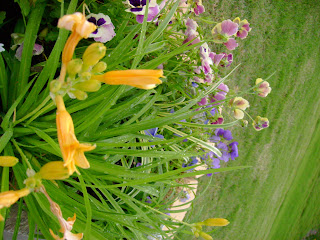









Vue de Jardin












Broccoli sprouts or broccoli can reduce the risk of stomach ulcers, and prevent stomach cancer. The scientists at
Besides broccoli[2], cauliflower[3], brussels sprouts, kale, cabbage and other cruciferous vegetables also contain phytonutrients that can prevent the onset and halt the progression of colon, breast, prostate, thyroid, cervical, and other cancers.
Watercress is an exceptionally rich source of potent cancer-fighting isothiocyanates, including the much-studied compound known as phenethyl isothiocyanate, or PEITC. It suppresses production of an enzyme that facilitates the spread of breast cancer to other tissues.[4]
So, what are those 20 cruciferous vegetables we should grow?
1. Arugula
2. Beet greens
3. Bok choy
4. Broccoli
7. Cabbage
8. Cauliflower
10. Collard greens
11. Daikon
12. Horseradish
13. Kale
14. Kohlrabi
15. Mustard greens
16. Radishes
17. Rutabaga
18. Swiss chard
19. Turnips
20. Watercress.

· Sweet potatoes contain many anticancer properties, including beta-carotene, which may protect
· Rosemary provides vitamin D and synergistic support in cancer prevention. According to researchers at the University of Maryland Medical Center, it also improves memory, relieve muscle pain and spasm, stimulate hair growth, and support the circulatory and nervous systems[6]
· Carrots - a component of carrots called falcarinol may be able to prevent cancer.[7]
· Garlic has immune-enhancing allium compounds (dialyl sultides) that appear to increase the activity of immune cells that fight cancer and indirectly help break down cancer causing substances.[5]
· Mushrooms - There are a number of mushrooms that appear to help the body fight cancer and build the immune system - Shiitake, maitake, reishi, Agaricus blazei Murill, and Coriolus Versicolor.[5]
· Turmeric (curcuma longa), a member of the ginger family, is believed to have medicinal properties because it inhibits production of the inflammation-related enzyme cyclo-oxygenase 2 (
· Tomatoes contain lycopene, an antioxidant that attacks roaming oxygen molecules, known as free radicals, that are suspected of triggering cancer.
Free books from National Cancer Institute
(if less than 20 copies - totally free, no shipping cost)
https://cissecure.nci.nih.gov/ncipubs/searchres.aspx
[4] Rose P, Faulkner K, Williamson G, Mithen R. 7-Methylsulfinylheptyl and 8-methylsulfinyloctyl isothiocyanates from watercress are potent inducers of phase II enzymes. Carcinogenesis. 2000 Nov;21(11):1983-8.

















My summer lilies have bloomed; see the changes over several weeks (photos below). I have to relocate it to a higher ground due to a landscape drainage or clay/mud problem. The problem is finally solved by using some castle bricks to plant it on a higher ground.








